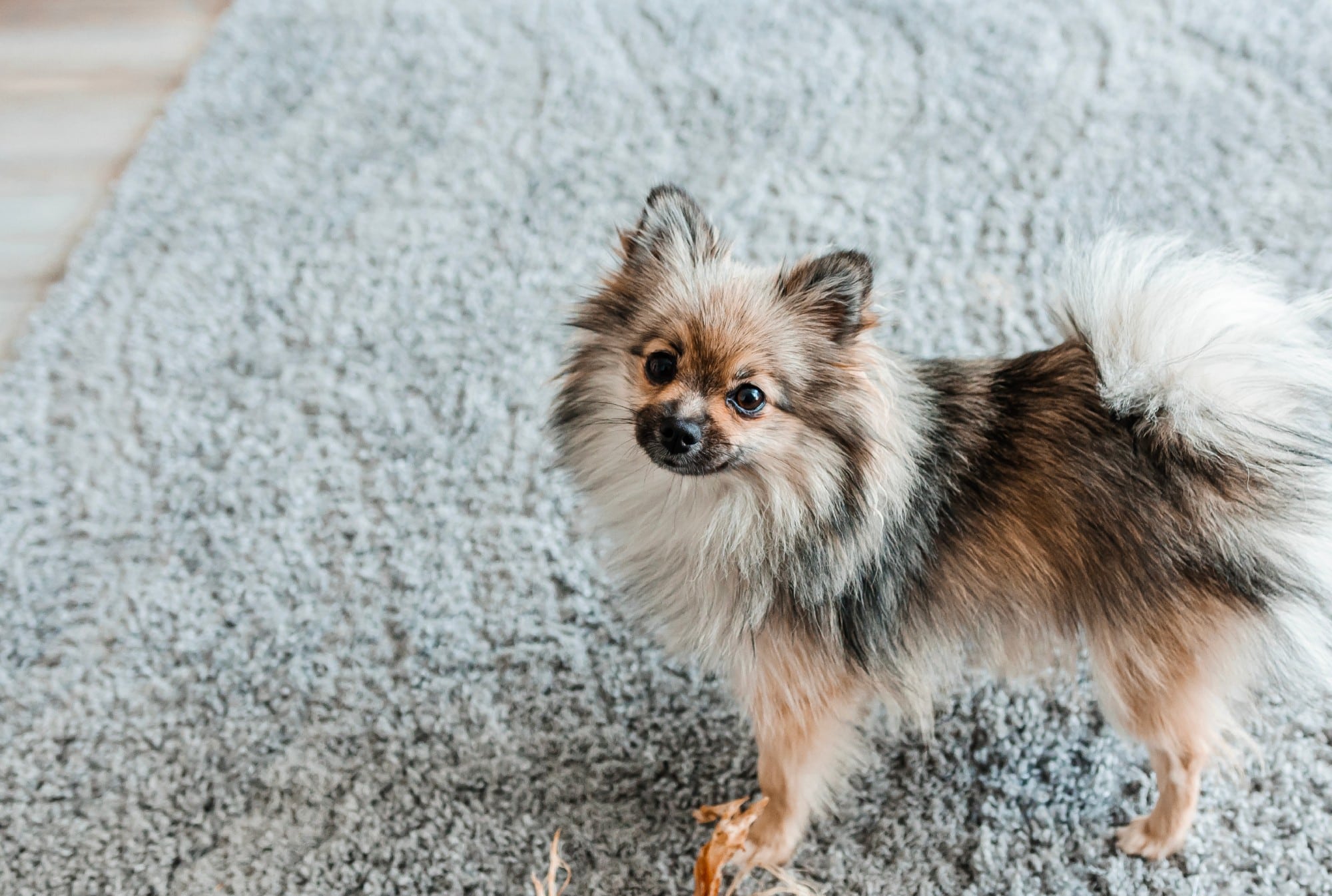We know diarrhea is not a pleasant subject — and our dogs agree. They don’t much like it either. But since dogs can’t read, talk or Google, they depend on us to help them feel better.
“Doggie runs” are common, but it varies in intensity, frequency and how long a bout lasts. It’s important to know when you need to take your dog to the veterinarian pronto and when you can try treating your dog at home.
Diarrhea is not a disease; it’s a symptom that something is amiss in your dog’s gastrointestinal tract. Most of the time it’s caused by stress or something your dog ate. It lasts a short time and goes away on its own.
But what if it doesn’t go away? How do you know when to take your dog to the doctor? What are the signs indicating your dog is really very ill?
Let’s take a look at what causes diarrhea in dogs, how to treat it at home and when you need to talk to your veterinarian.
Related: Are You Storing Your Dog’s Food the Right Way? If Not, It Could Put Your Pup in Danger.
What Causes the Doggie Runs?
There are a lot of reasons why your dog has diarrhea. Here are some of the top causes:
Overeating. You dog may be happily snoozing after that mammoth Thanksgiving-type splurge, but his stomach isn’t so pleased.
Eating garbage or spoiled food. Your dog may have raided your garbage or hoovered something on the street.
Changing the dog’s food. The change may cause some intestinal irritation. Try mixing the new food into the old food in increments.
Parasites, bacteria or worms. When any of these invade the digestive track, diarrhea is one symptom. Some examples include roundworms, hookworms, tapeworms, whipworms, giardia, coccidia and salmonella.
Eating things that aren’t food. If your dog scarfs socks, toys, rocks, underwear or anything else that can’t be digested, it will cause the body to rebel.
Allergies. These are usually food allergies or food intolerances. When your dog’s body reacts to food as if it’s something harmful, diarrhea may result. Common food allergies include beef, dairy, wheat, eggs, chicken, lamb, and soy products
Stress. Just like humans, when your dog is stressed, the body revolts. Common stressors include a move to a new home, the loss of a family member and the death or addition of another pet.
Inflammatory disorders. Dogs can get inflammatory bowel disease too. Also known as IBD, it is a form of gastrointestinal disorders that also include gastroenteritis and colitis.
Illness. Underlying medical conditions can cause diarrhea, including cancer, kidney disease, liver disease, thyroid disease and pancreatitis.
Medications. Diarrhea is a common side effect of drugs like antibiotics and NSAIDS, which are non-steroidal anti-inflammatories used for pain relief. These include Rimady, Metacam and Meloxicam.
Plants toxic to dogs. Just because a plant is poisonous to dogs doesn’t mean it doesn’t taste good. These include some common plants often found in a backyard such as foxglove, hosta plant, Iris, English ivy, begonia, hydrangea and others. Common household plants poisonous to dogs include aloe, dieffenbachia, jade plant, dracaena (a.k.a. cornstalk plant), flame lily, desert rose, oleander and others.
Related: Here’s What Is in Dog Food That Causes Allergies — and What to Do About It
When is Diarrhea an Emergency?
Sometimes, diarrhea can be so severe, your dog will become severely dehydrated, resulting in a dangerous electrolyte imbalance. Or it can indicate that your dog has a serious illness.
Here are some of the signs that mean it’s time to run, don’t walk, to your local veterinarian or even an emergency animal hospital.
Loss of appetite or thirst
Lethargy or depression
Black, tarry poop or poop with bright red blood may be a sign of internal bleeding
Grey or orange poop may be a sign of organ problems
Poop with white bits like rice may indicate worms
Poop with grass, wood, or string indicates your dog ate something he shouldn’t have
Very watery poop indicates an intestinal problem
Frequent vomiting
Severe abdominal pain (signs include: bloating, panting rapidly, groaning, or avoiding having the belly touched)
Lasts longer than 48 hours
Existing condition (diabetes, Cushings, cancer, etc.)
Your dog is a puppy, a senior or very small
You can go here to see a Fecal Scoring Chart that vets use.
How to Treat Mild Diarrhea at Home
You can treat mild diarrhea or brief bouts at home, but it’s always a good idea to talk to your vet first.
Fasting. Withhold food for 24-hours, but make sure your dog drinks. If your dog is very young, old, or very small, a complete fast is not recommended. According to the AKC, you can give your dog unflavored Pedialyte.
After or instead of a fast. Boil premium rice in a lot of water (double what the instructions say or more). Strain out the grains of rice over a bowl. The water left should be white and creamy. You can put a splash of broth or baby food to make your dog want to drink it.
White rice and boiled chicken. Mix together white rice, a small amount of boiled chicken and a probiotic.
Pumpkin. Plain, unsweetened pumpkin is often very good for both diarrhea and constipation. Use only pure pumpkin; do not buy a pre-mixed pumpkin pie filler. For small dogs, give 2 teaspoon a day. For large dogs, give two tablespoons a day.
Other mild food. You can add peeled boiled potato, cottage cheese, boiled chicken and egg cooked without butter or oil.
Some over-the-counter human human meds. Always be careful before giving your dog any human medicine! Talk to your vet first. Dogs can take Imodium, for example, except for breeds of collies. Walker Valley Vet says to never give Imodium to Collies, Shelties, Australian Shephards and Long-haired Whippits. Give 0.3 – 0.6 ml per pound twice to three times daily. Pepto-Bismol can be given to dog (but never cats). Give 0.5 ml per pound (1 teaspoon for every 10 pounds your dog weighs) every 4 to 6 hours for 5 days. For a dosage chart for Pepto-Bismol, go here. For Imodium, go here.
If your dog’s diarrhea continues for more than 24 hours or it gets worse, call your veterinarian asap.
Please keep in mind the above is not intended to be medical advice. Please consult with a professional or veternarian.
Related: A Recent Dog Biscuit Recipe in ‘The Washington Post’ Includes a Potentially Deadly Ingredient



















